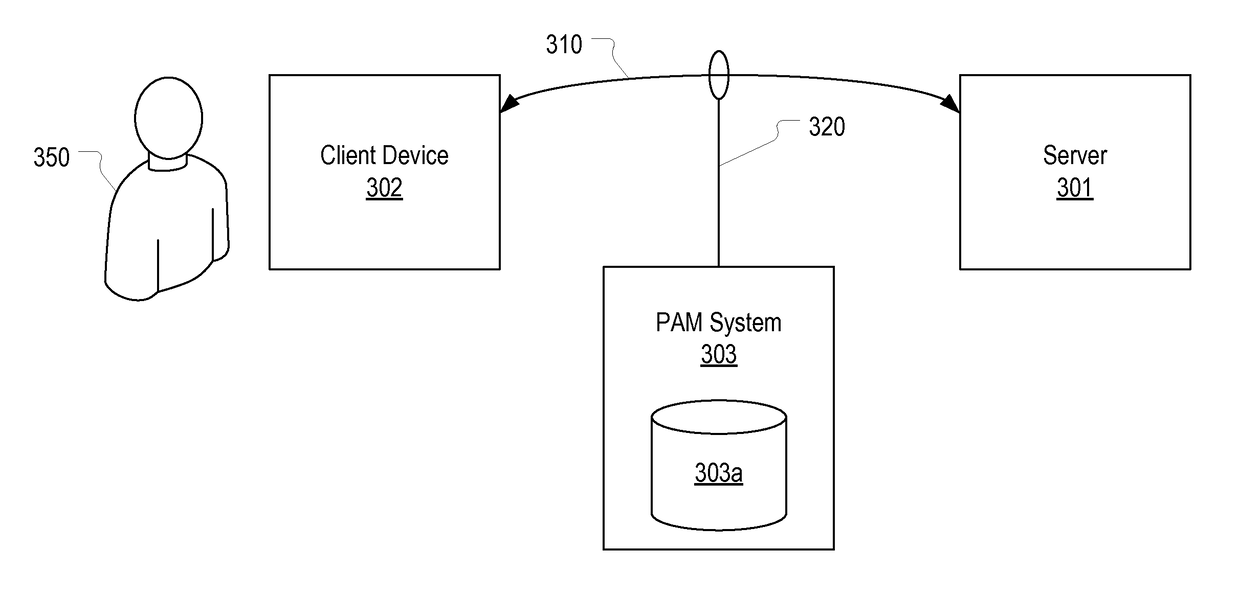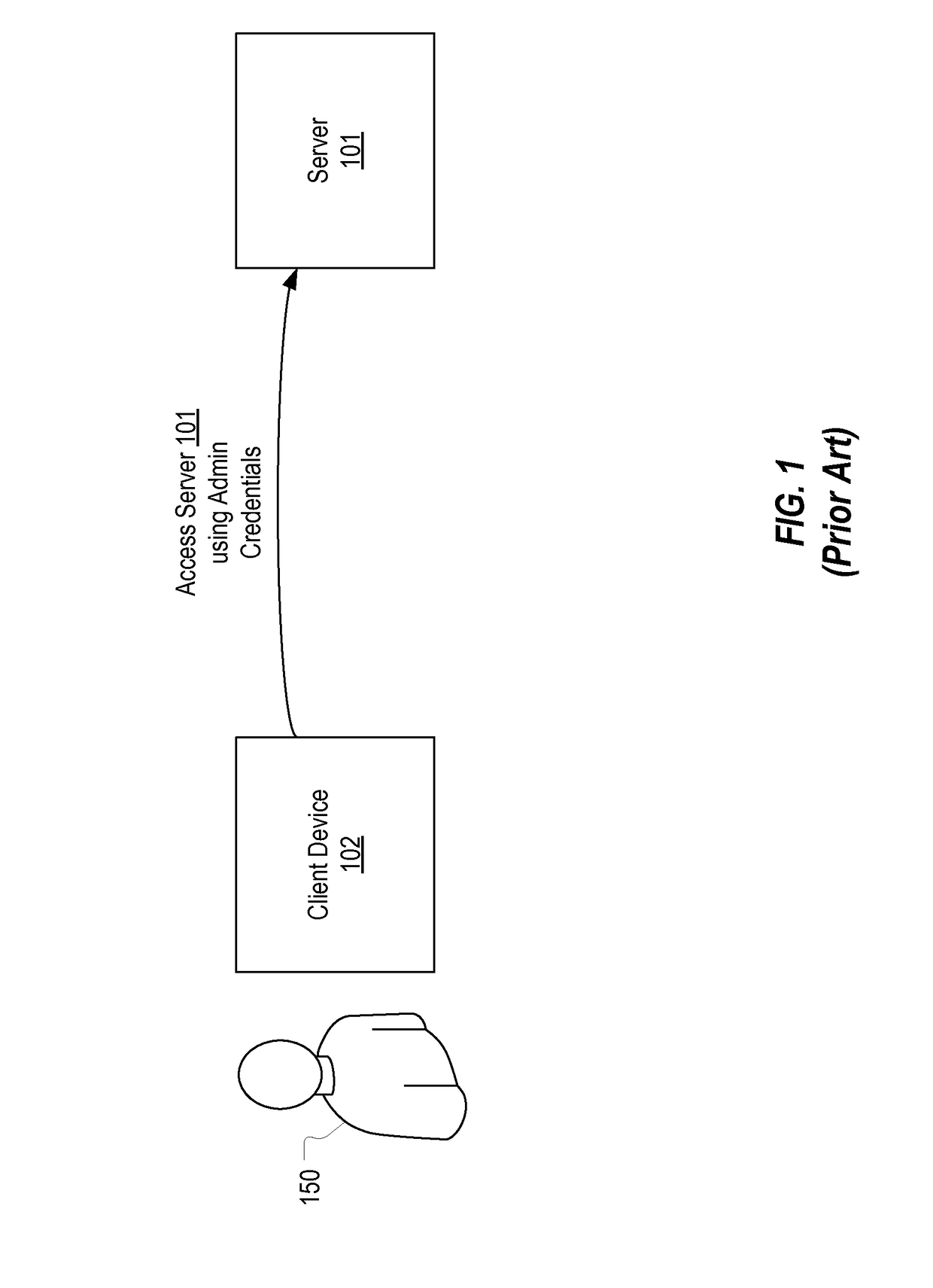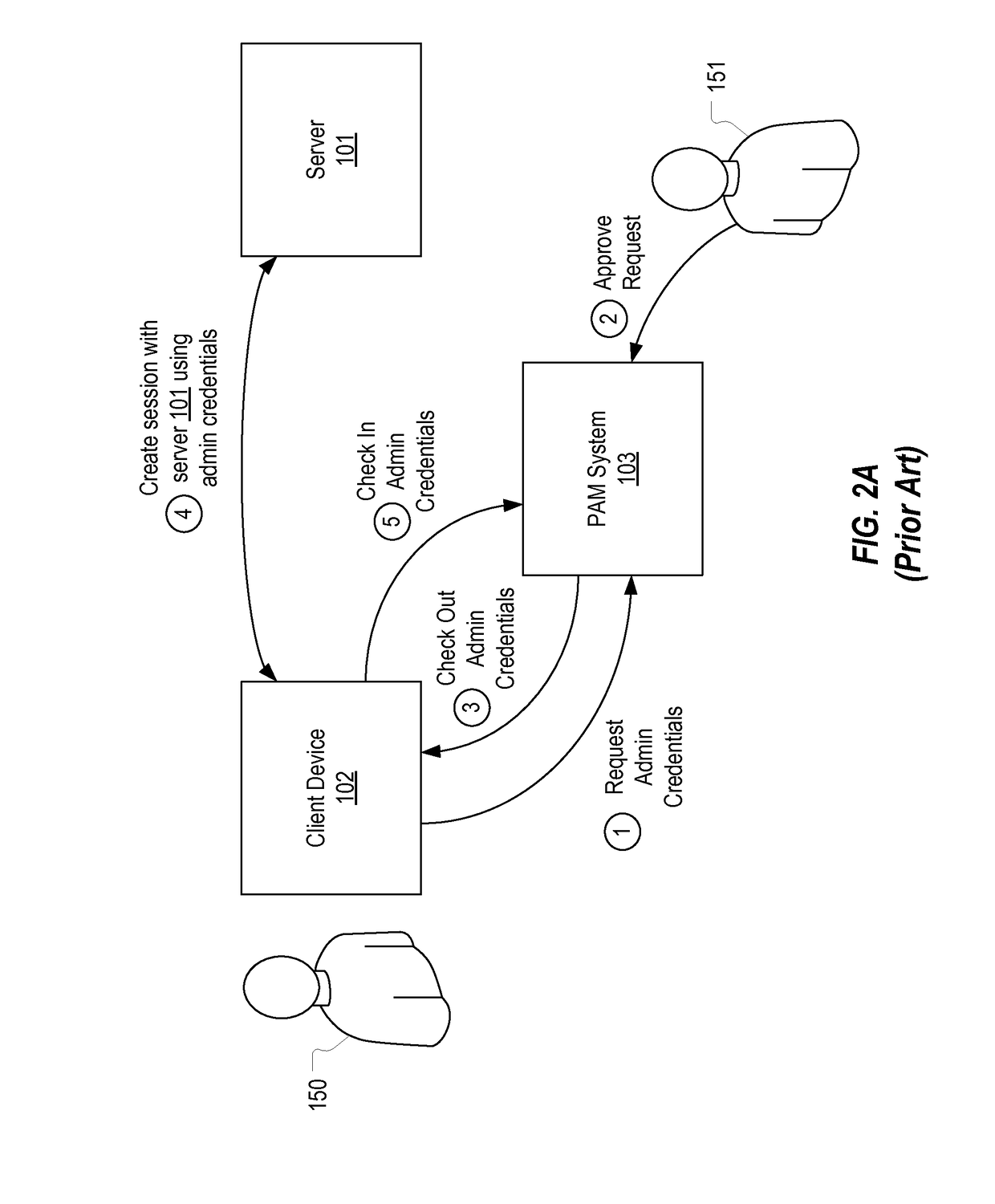Detecting unauthorized, risky, or inefficient usage of privileged credentials through analysis of remote shell protocol bandwidth
a technology of privileged credentials and remote shell, applied in the direction of unauthorized memory use protection, instruments, digital computers, etc., can solve the problems of limited access to such servers and few options, and achieve the effect of mitigate any potential harm to the server
- Summary
- Abstract
- Description
- Claims
- Application Information
AI Technical Summary
Benefits of technology
Problems solved by technology
Method used
Image
Examples
Embodiment Construction
[0030]In this specification, a reason code should be construed as any type of information which specifies a reason for which an administrator is requesting privileged access to a server. Examples of reason codes include: reboot the server, back up the server, apply an operating system update, deploy an application, etc. A PAM system can be configured to allow any reason code to be created and used by an administrator to request access to a server. In this specification, it will be assumed that, prior to obtaining access to a server via a remote session, an administrator is required to provide a reason code that identifies the task that the administrator would like to accomplish over the remote session. A security officer, upon reviewing the administrator's reason code, may grant or deny the requested access (e.g., by allowing the administrator to check out admin credentials which the administrator can use to establish a remote session with the server or by creating a remote session ...
PUM
 Login to View More
Login to View More Abstract
Description
Claims
Application Information
 Login to View More
Login to View More - R&D
- Intellectual Property
- Life Sciences
- Materials
- Tech Scout
- Unparalleled Data Quality
- Higher Quality Content
- 60% Fewer Hallucinations
Browse by: Latest US Patents, China's latest patents, Technical Efficacy Thesaurus, Application Domain, Technology Topic, Popular Technical Reports.
© 2025 PatSnap. All rights reserved.Legal|Privacy policy|Modern Slavery Act Transparency Statement|Sitemap|About US| Contact US: help@patsnap.com



